The wheel is one of man’s oldest inventions, with wheelbarrows and handcarts almost as old. Simply put, they enable a person to transport loads over a greater distance, and with less energy expenditure than without.
There are many variations in design, one-person, two-person, front wheel, central wheel, push, pull, and single or double wheel.
Each has a specific use case, a single-wheel one-person push barrow, for example, allows heavy loads to be moved short distances, and is highly manoeuvrable in the tight spaces often found on a building site.
Military handcarts also have a long history, with numerous examples of use in most major conflicts.
Historical Examples
Before WWII, the British Army tested several concepts.
In 1934, Brigadier General (retired) F. L. Festing designed and built several prototype tracked carriers, the 6×4 foot load bed was hinged to accommodate different-sized loads. Remarkably for its time, it used continuous rubber tracks and could carry over 700 kg up a 30-degree slope.
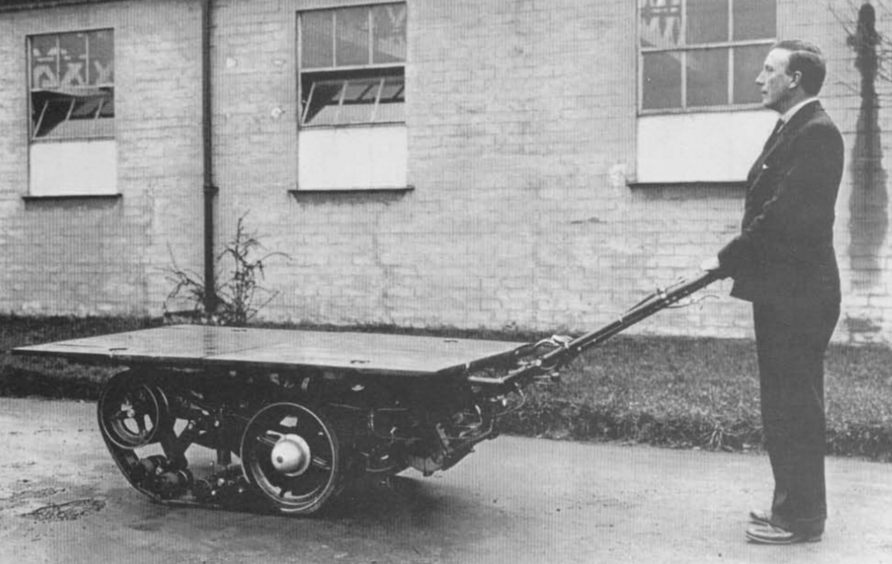
It never entered service and little is known of it beyond that.
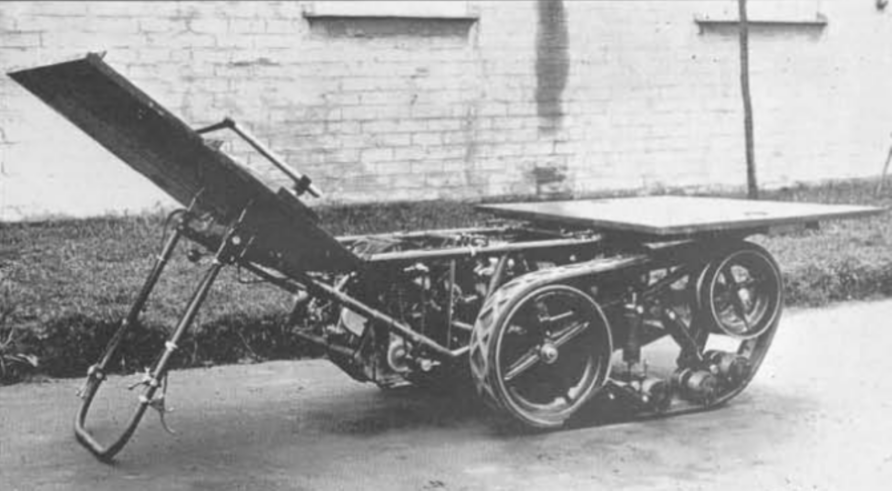
British Army Airborne Handcart
Over 16,000 were made by SS Cars Ltd (Jaguar) during WWII, and although not entirely limited to airborne units, they would be mostly used by them, especially in mortar platoons.
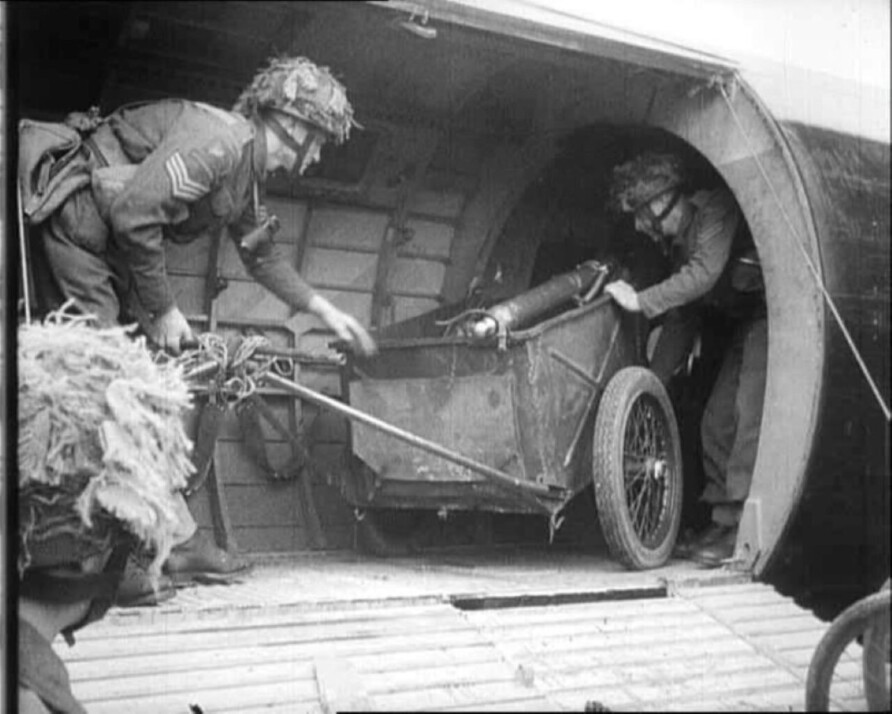
These could be fitted with rope toggles for additional personnel to pull or support lowering, and the two-man handle and pneumatic tyres afforded good mobility.
Other models included the airborne trolley, mostly used for clearing landing zones of containers and carrying medical supplies.
A larger steel mesh design was also used.
US Army Utility Handcart
These were issued to all branches of the US Army during WWII, widely manufactured in steel and aluminium, with many variations and adaptions.
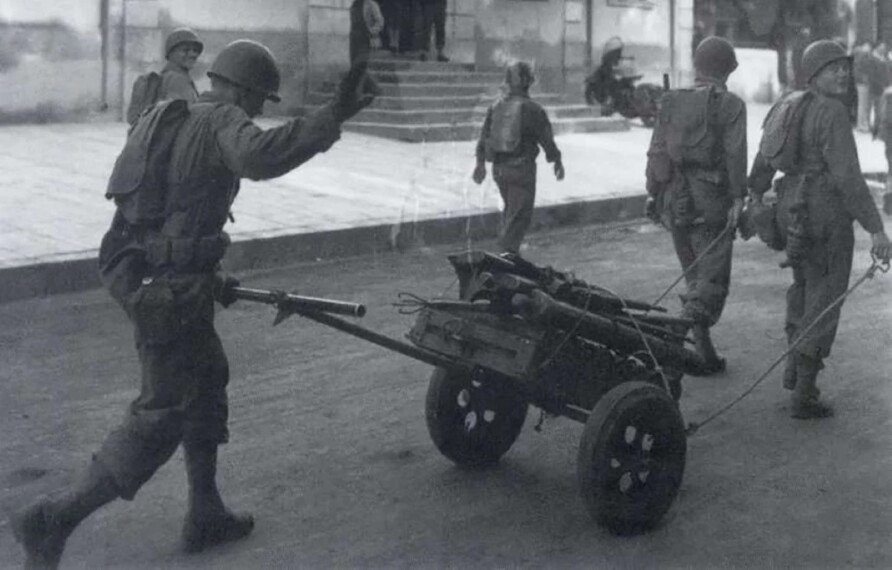
This was a similar design to the airborne handcart, two-man handle, ropes, and simple unsprung pneumatic wheels. Where this design differed was the range of accessories that could be used to expand utility, it was a much more developed concept.
A simple towing attachment allowed it to be moved quickly with a Jeep, cable drum support rollers for signal units, and even tripod fittings that enabled it to be used as a machine gun carrier.
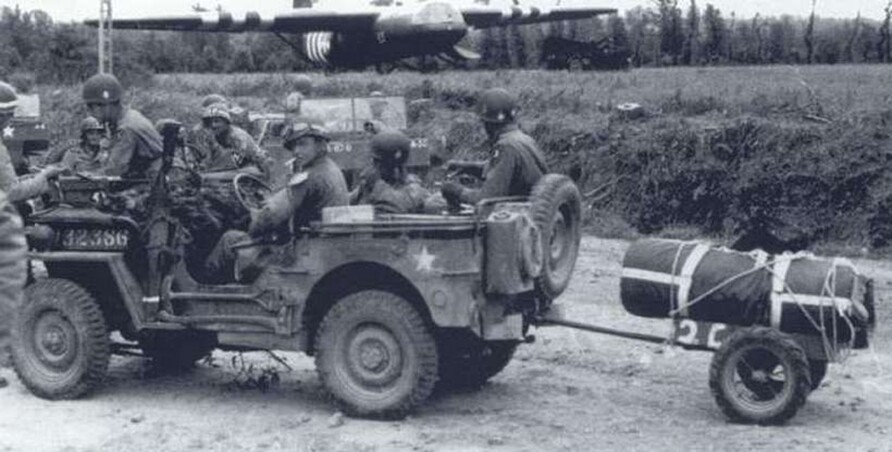
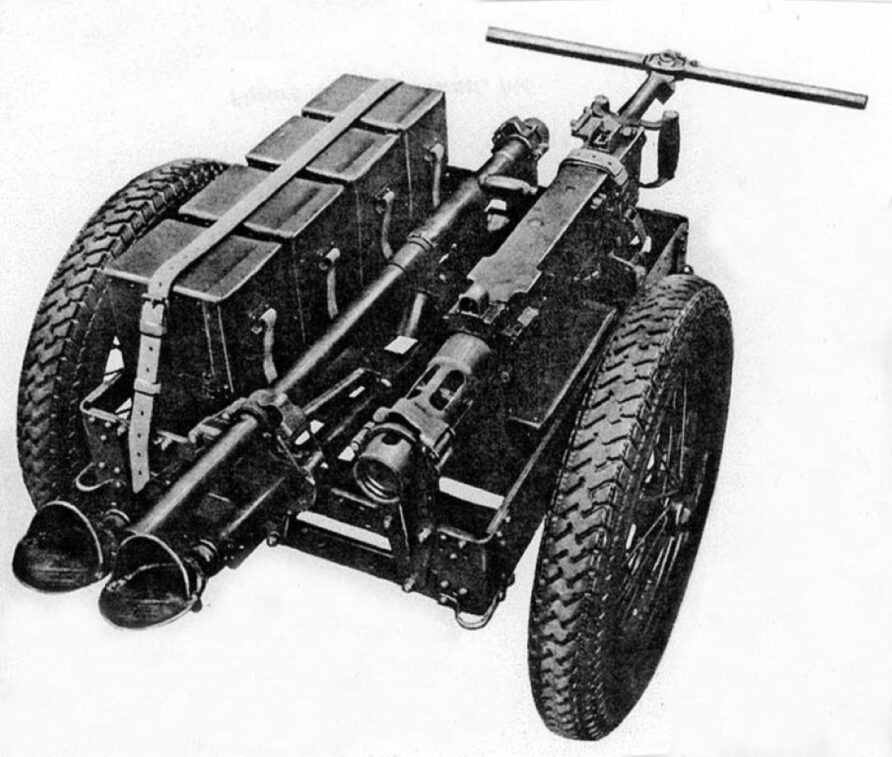
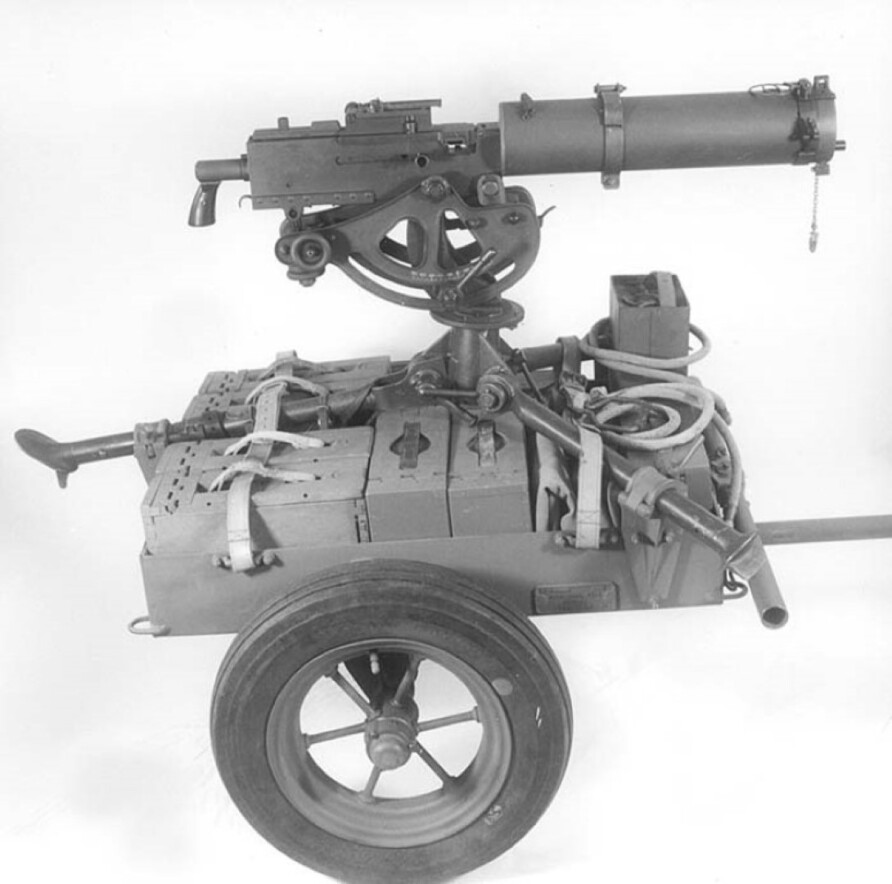
By using a range of clamps, brackets, bags, covers and other accessories, the US Army had a very flexible and adaptable system.
It was also easy to disassemble and transport.
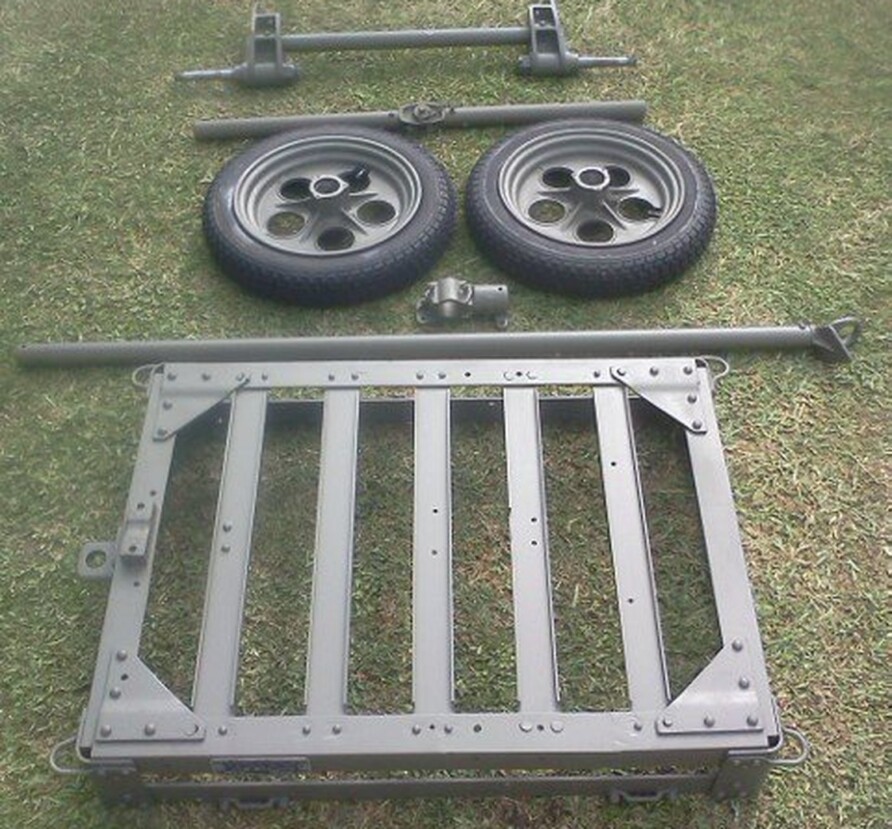
Wehrmacht Infanteriekarren (If. 8)
Also, similar to the designs above, the If.8 was widely used by German forces.
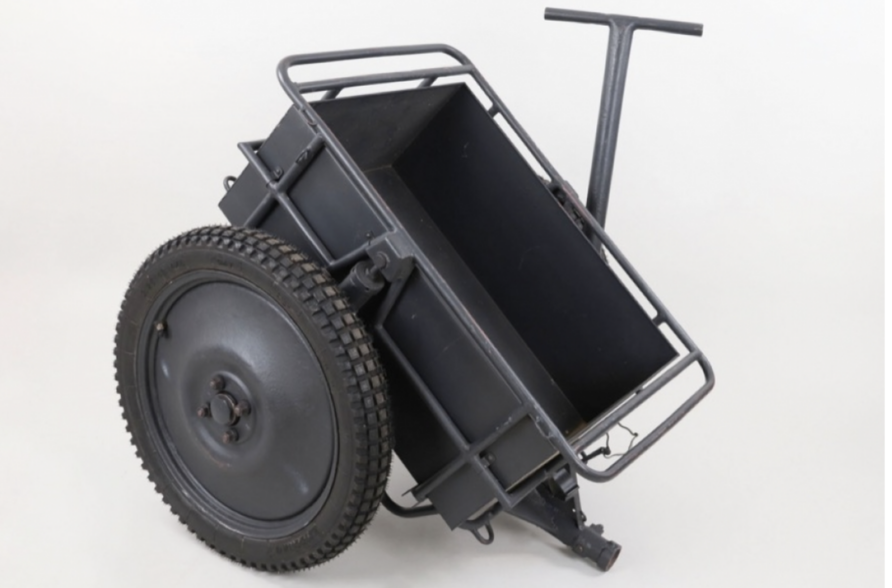
The If.8 had a useful feature that allowed them to be towed in tandem by horses, vehicles, or even dogs!
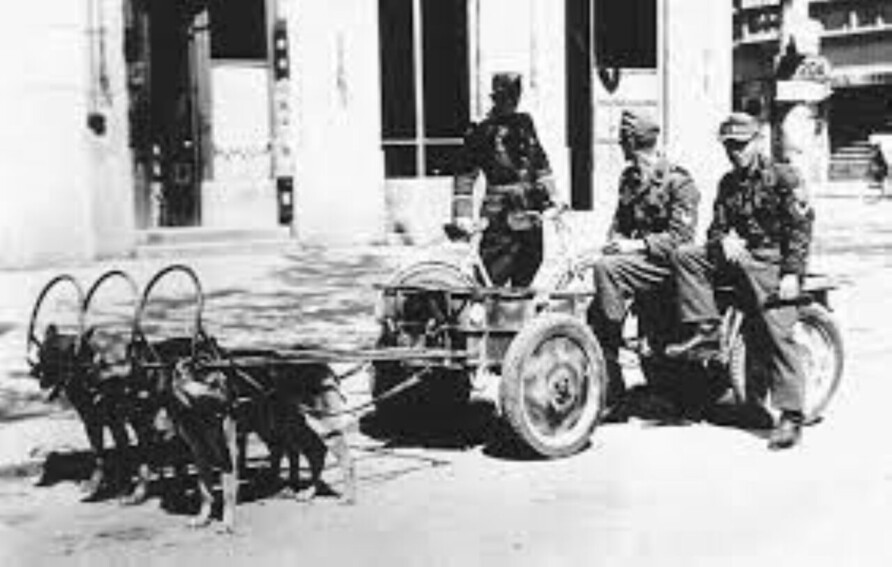
It also featured a simple suspension and was used in the Panzerzerstörer units whose focus was anti-tank operations using the R-Panzerbüchsen 54 (Panzerschreck) rocket, each company had several If.8 trailers equipped with brackets to enable 8 rockets to be carried and easily offloaded.
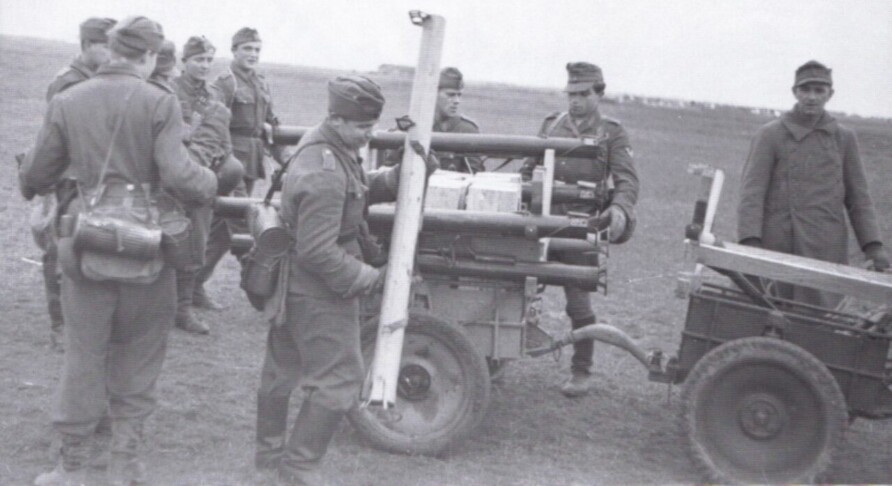
Others
Post-war, infantry handcarts faded away, although notable examples are worth mentioning.
Egyptian forces used handcarts to great effect during Operation Badr, crossing the Suez
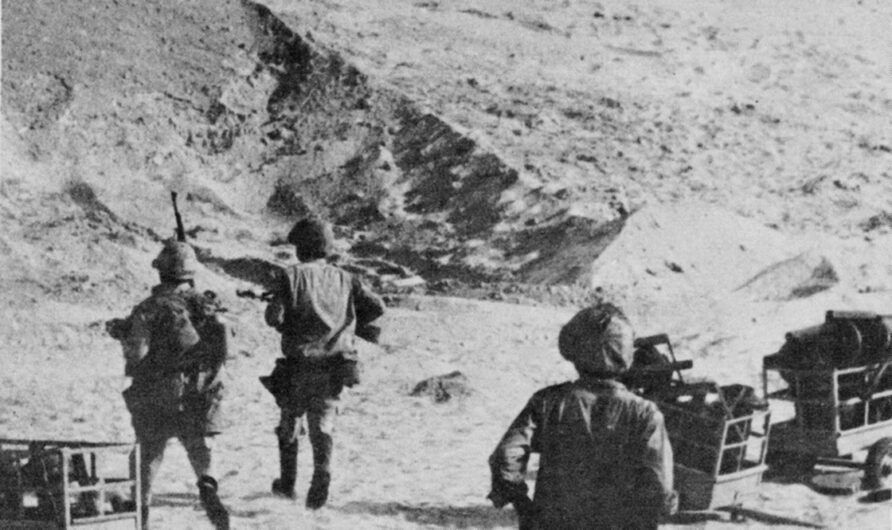
The British Army examined many handcart concepts post-war, drawing on its vast operational experience.
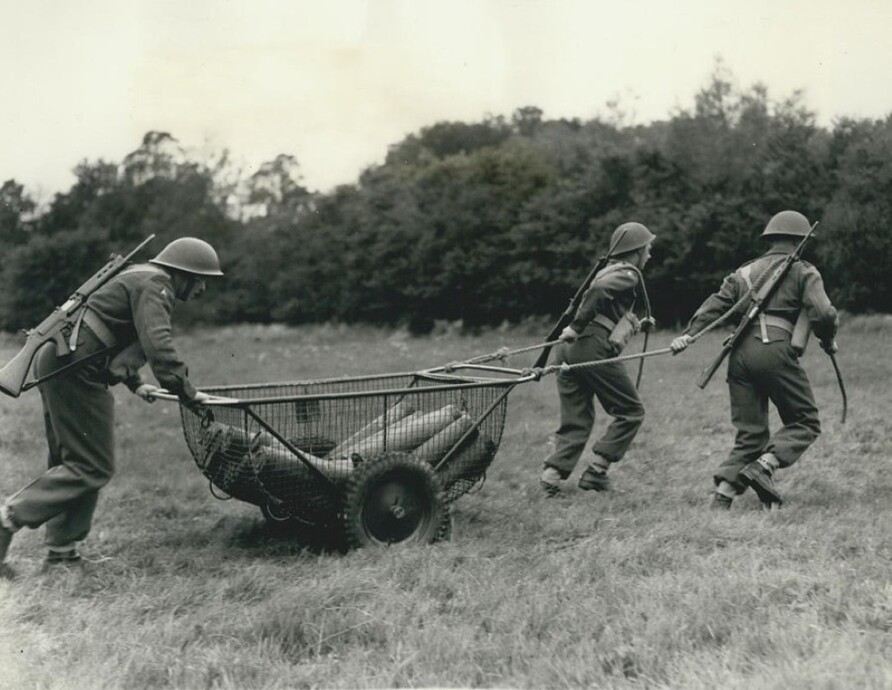
One of the designs could also be fitted with flotation bags.
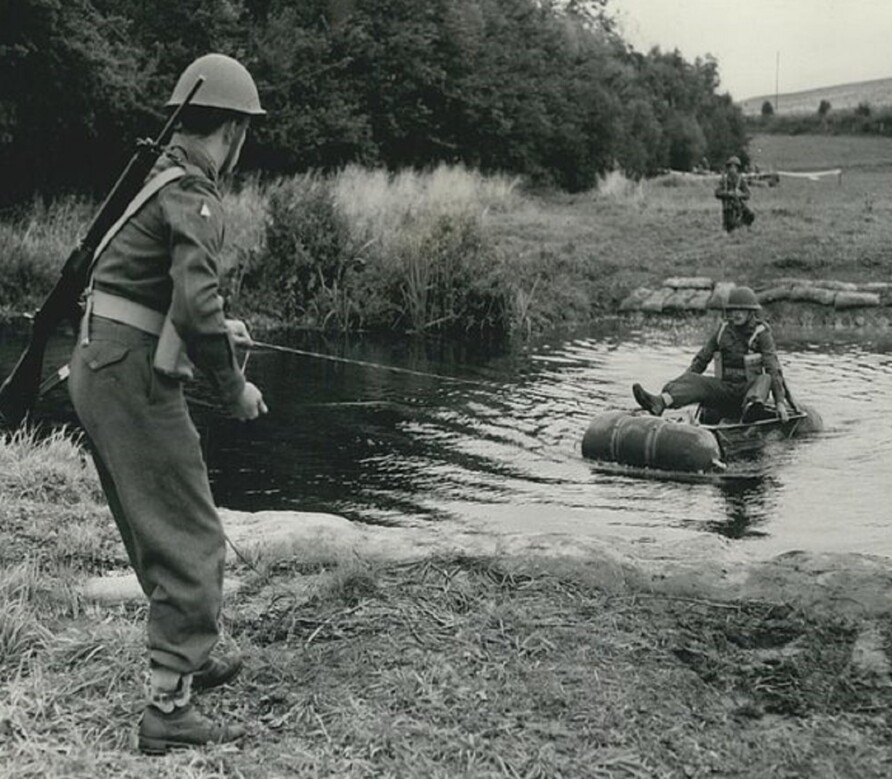
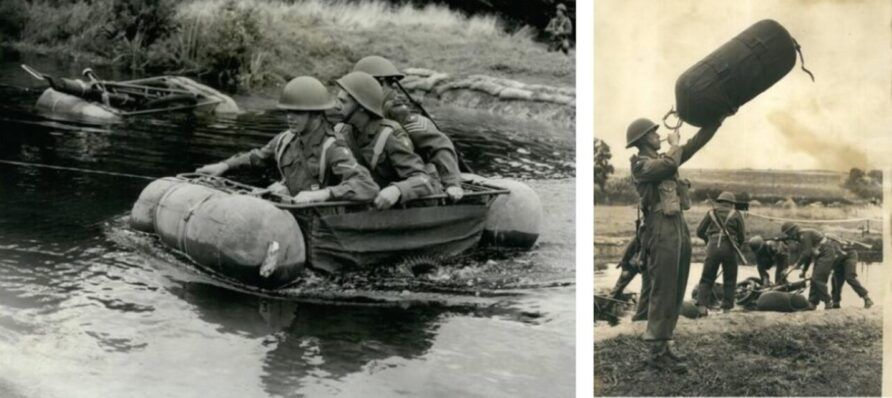
Not a smoker!
There was also a powered version
Another development was a powered stretcher.
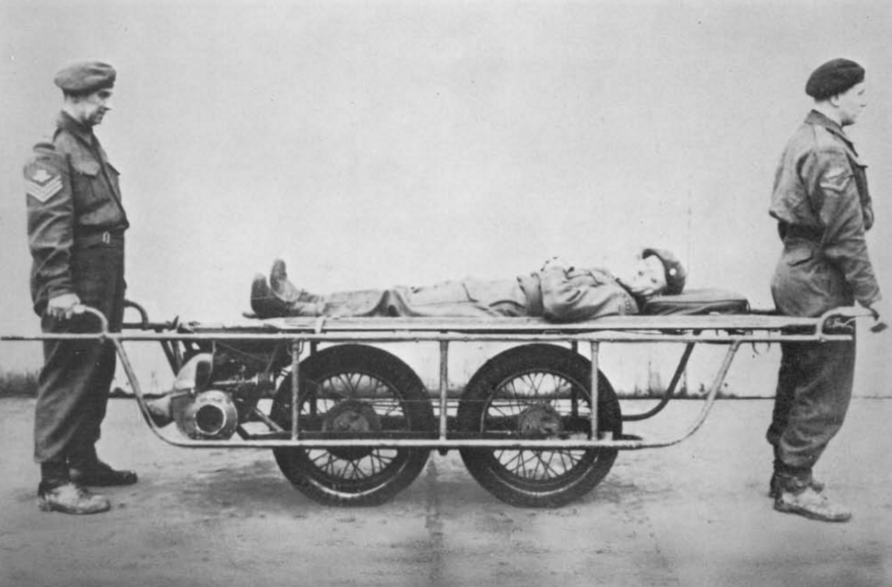
Before reading on, would you mind if I brought this to your attention?
Think Defence is a hobby, a serious hobby, but a hobby nonetheless.
I want to avoid charging for content, but hosting fees, software subscriptions and other services add up, so to help me keep the show on the road, I ask that you support the site in any way you can. It is hugely appreciated.
Advertising
You might see Google adverts depending on where you are on the site, please click one if it interests you. I know they can be annoying, but they are the one thing that returns the most.
Make a Donation
Donations can be made at a third-party site called Ko_fi.

Think Defence Merch
Everything from a Brimstone sticker to a Bailey Bridge duvet cover, pop over to the Think Defence Merchandise Store at Red Bubble.
Some might be marked as ‘mature content’ because it is a firearm!
Affiliate Links
Amazon and the occasional product link might appear in the content, you know the drill, I get a small cut if you go on to make a purchase
Another Look at the Concept
Despite their widespread use in previous conflicts, in more recent times, they seem to have fallen out of favour. As infantry-carried weights are not showing any signs of reducing, it is also a subject I have written about a few times, this being the most recent example.
This news piece about Afghanistan from 2006 illustrates the problem where trolleys might have been helpful, members of the US 10th Mountain Division hauling water bottles with stretchers and a ‘bucket brigade’.
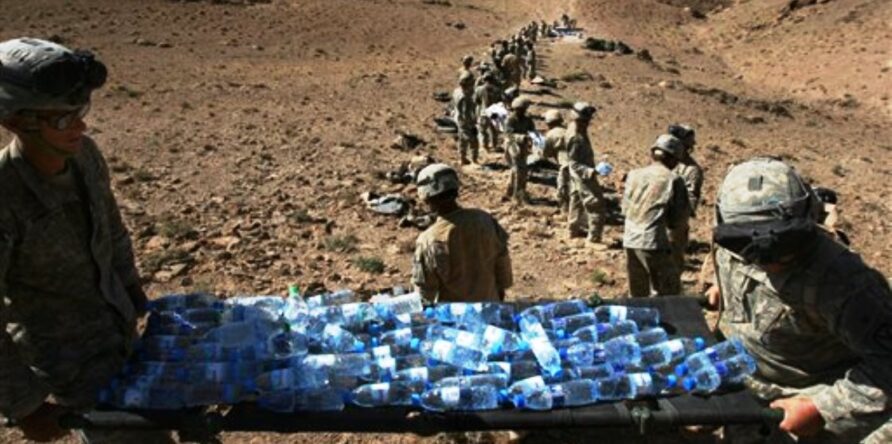
Oh, lacking a wheel!
Small ATVs and quad bikes with trailers seem to be the norm now.
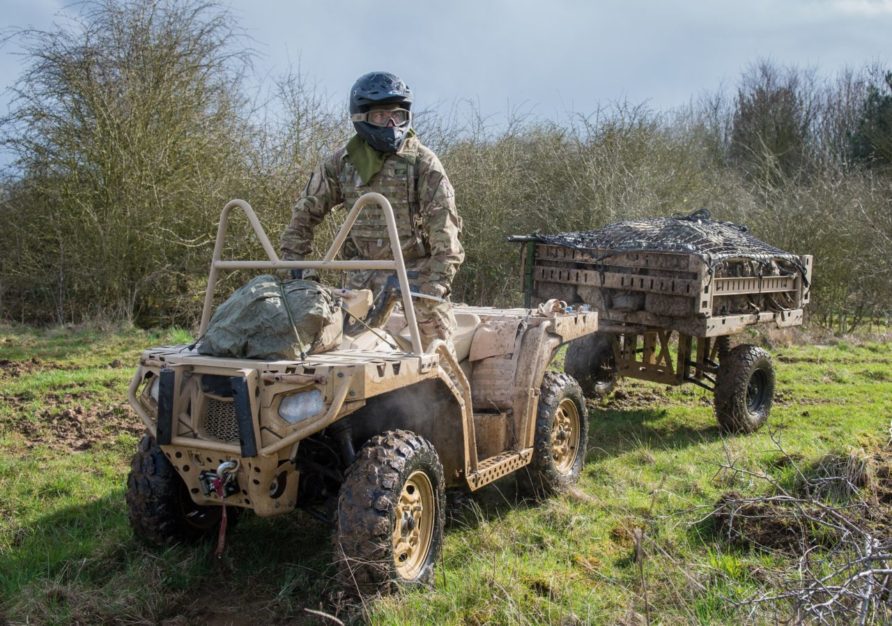
A recent Tweet caught my attention, focussed on working in the urban environment and the brilliant innovation and experimentation by the British Army.
Not only for medical reasons but also the challenges of resupply in the close confines often found in urban environments where a quad could not access
I must thank Will and James for these tweets and their online engagement certainly had some interesting conversations, very lucky to be tagged in.
The question is simple,
Is it worth revisiting the concept of a handcart for infantry and other forces, especially in an urban environment?
My view is yes, I think they still have much to offer, no surprise there then.
But if we accept there is value, what are the options, how do we test them out, how do we find space in a crowded budget to bring them into service, and how do we sustain them in-service?
A few thoughts on the options…
Walking Trailers and Hiking Carts
The Honeybadger Wheel is reminiscent of the Chinese Wheelbarrow, a single large wheel with side panniers for load carriage, operated in push mode rather than pull.
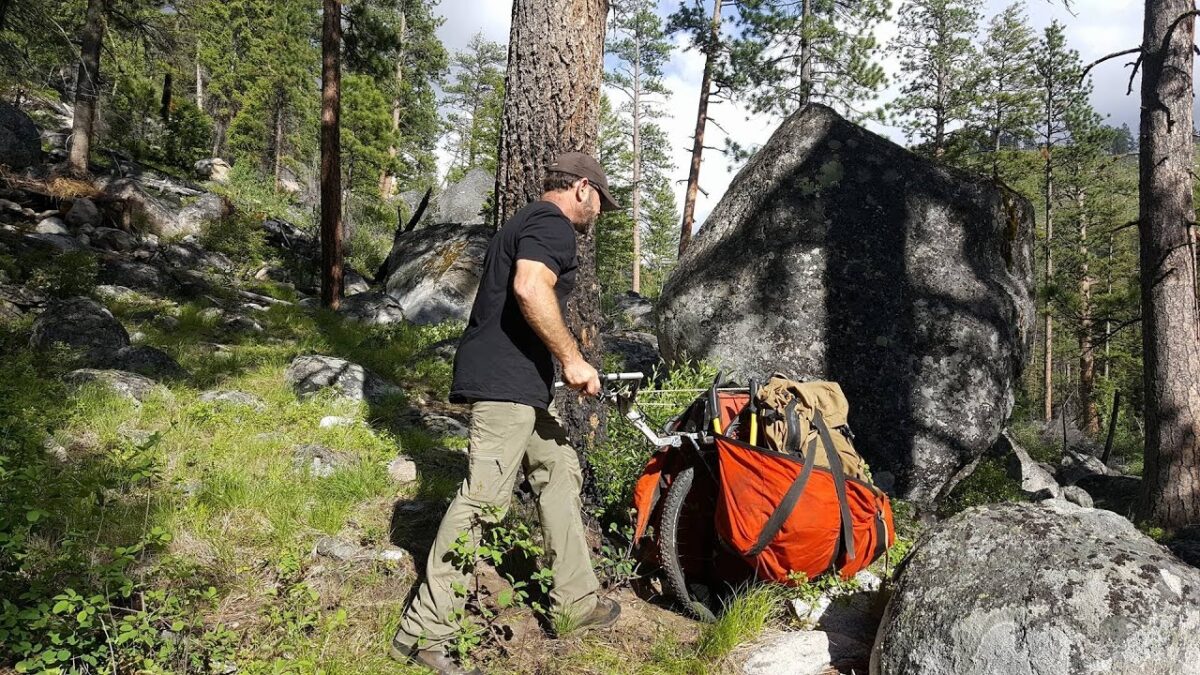
The total carrying capacity is more than 70 kg
The Hawk Crawler is another example, this time in a more traditional pull-behind configuration
Stretcher Carrier
The most obvious solution is to use what was trialled in the tweets above. Although rather specialised, litter/stretcher wheel kits are available from manufacturers such as Ferno, Flamor and Cascade Rescue, and have the benefit of rugged simplicity.
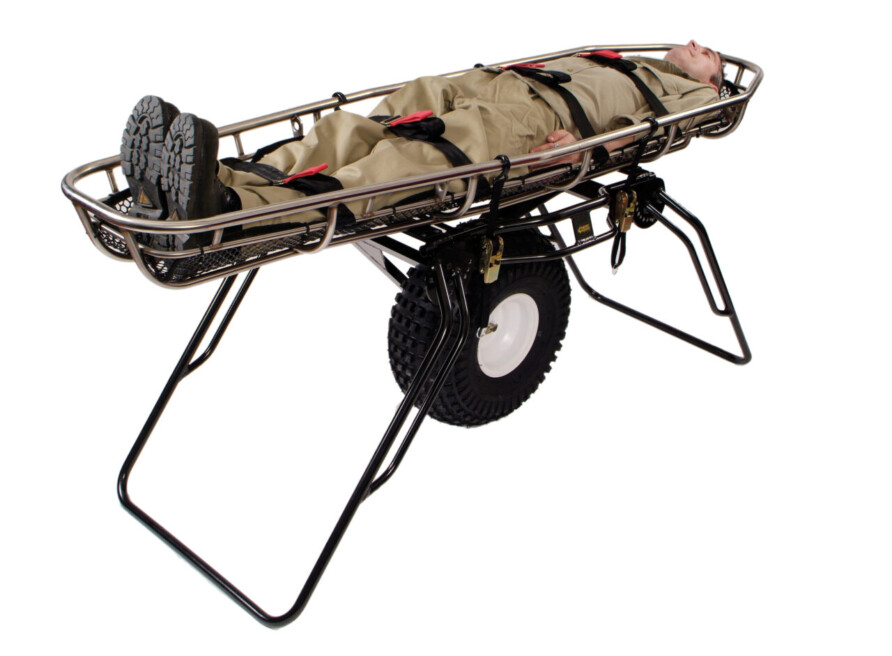
They are compact, lightweight and can be used for both casualties and general stores, some have a single wheel, others two.
Different wheel options are also available.
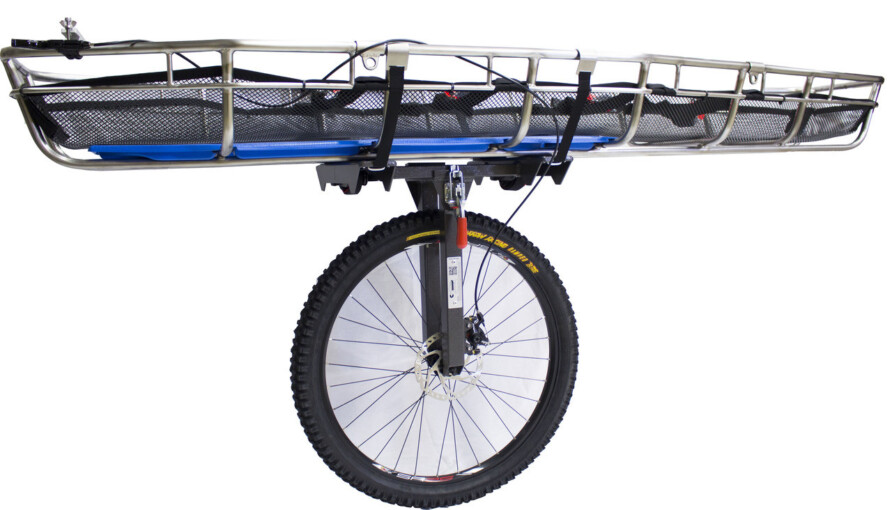
All of these do remain relatively expensive.
Hunting Carts
Over in the USA, there is a large market for hunting carts, there are volumes that drive down costs.
This one, for example, costs the princely sum of $89
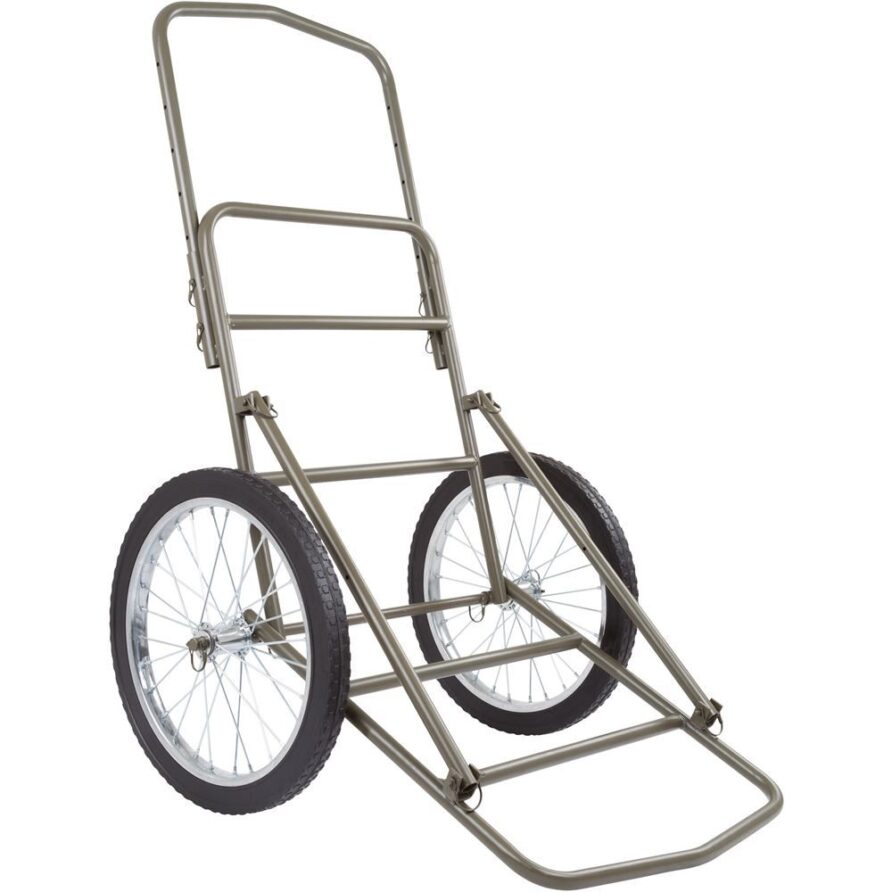
It also folds
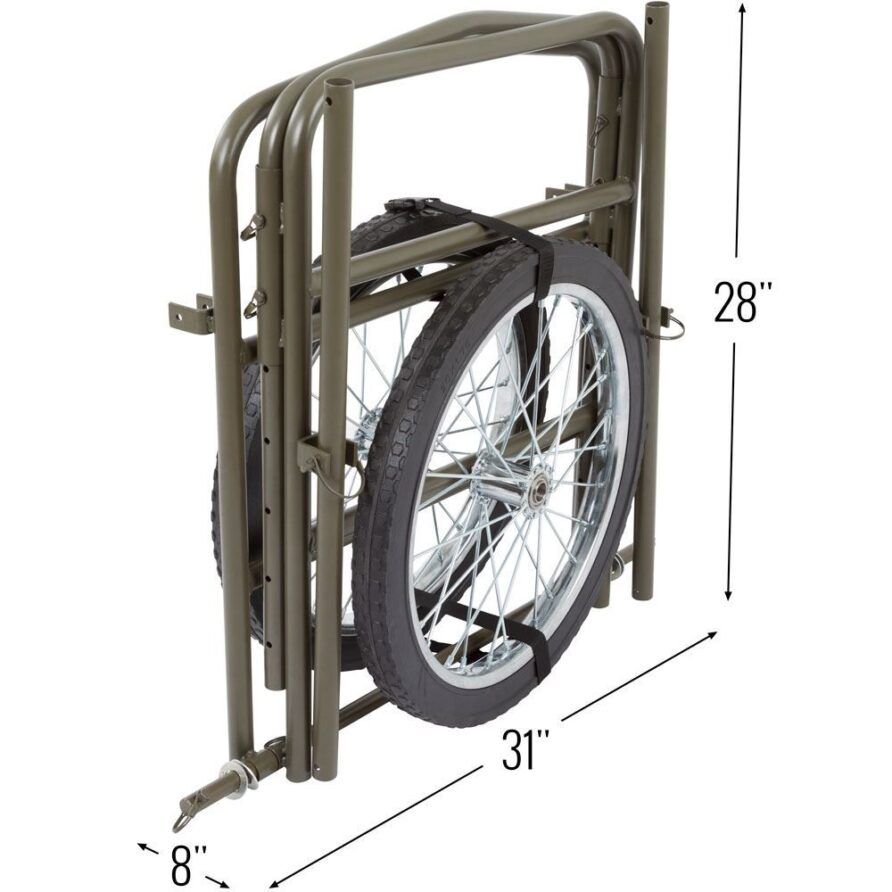
Another more expensive model ($199) also folds but has a more robust construction and better wheels.
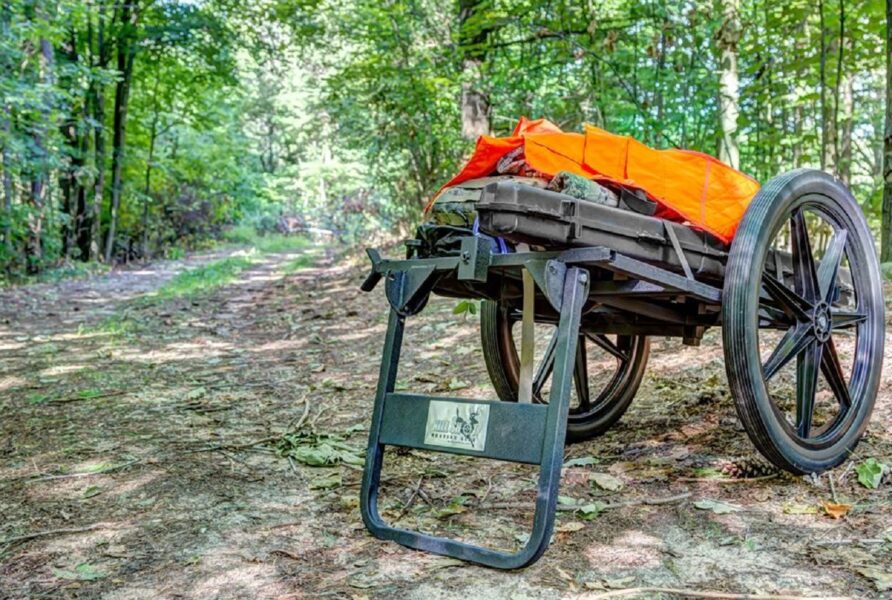
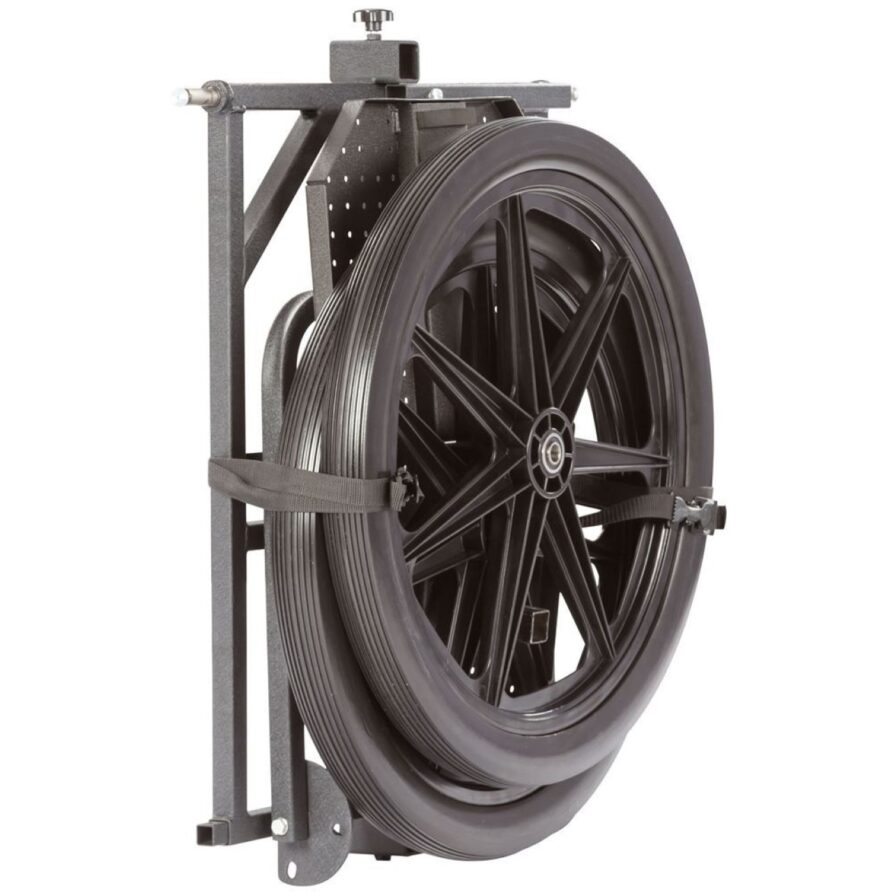
Gone Fishing
At the cheaper end of the market is the humble angling trolley, used by tens of thousands of people worldwide. Because of their ubiquity, they benefit from high production volumes to keep costs down, the example below from Angling Direct is a couple of hundred Pounds.
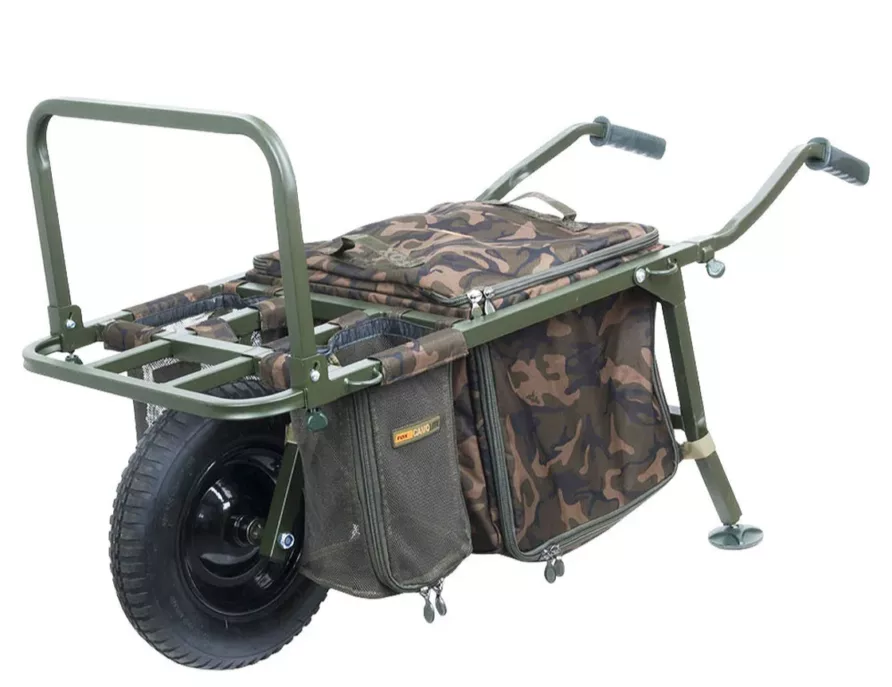
And can be folded.
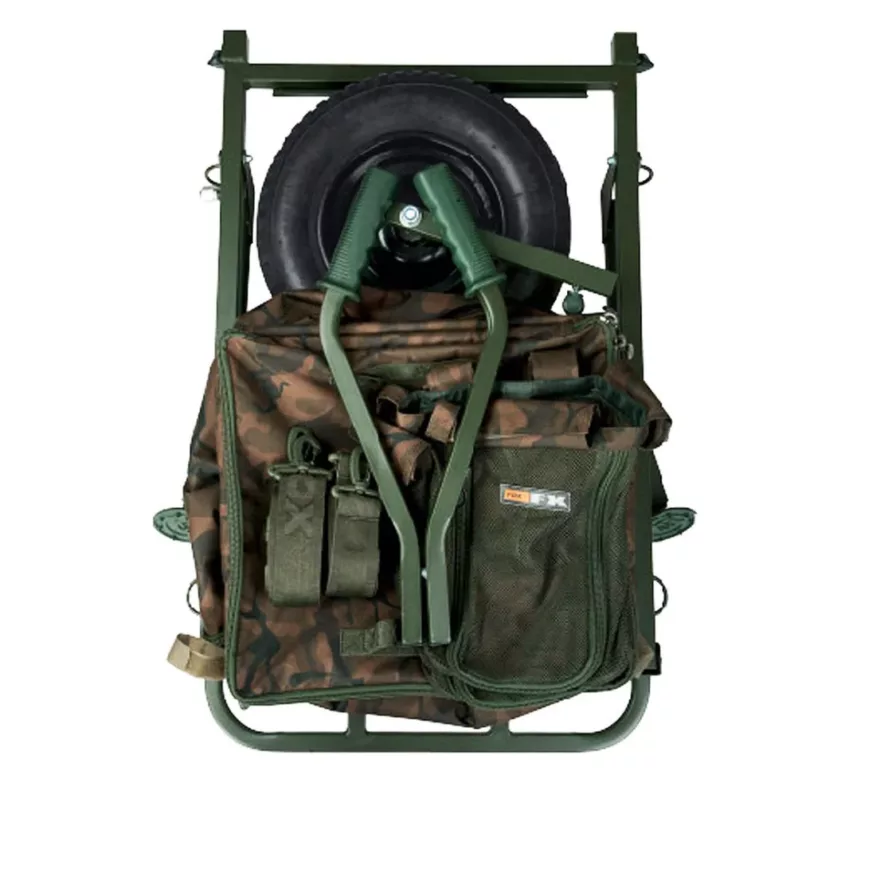
These would be of no use for a casualty/stretcher and would be only operable by one person, thus limited payload, but likely easy to use, attach various sewn bags and equipment straps.
Did I mention they were cheap?
Municipal Markets
If we look at who moves things around an urban environment by hand, it is obvious that street sweepers and posties might have the answers, the descendant of the ‘Barrow Boys‘
At about a thousand Pounds, these orderly carts are built to last, although the bins might not be best suited to defence stores, they would at least be waterproof.
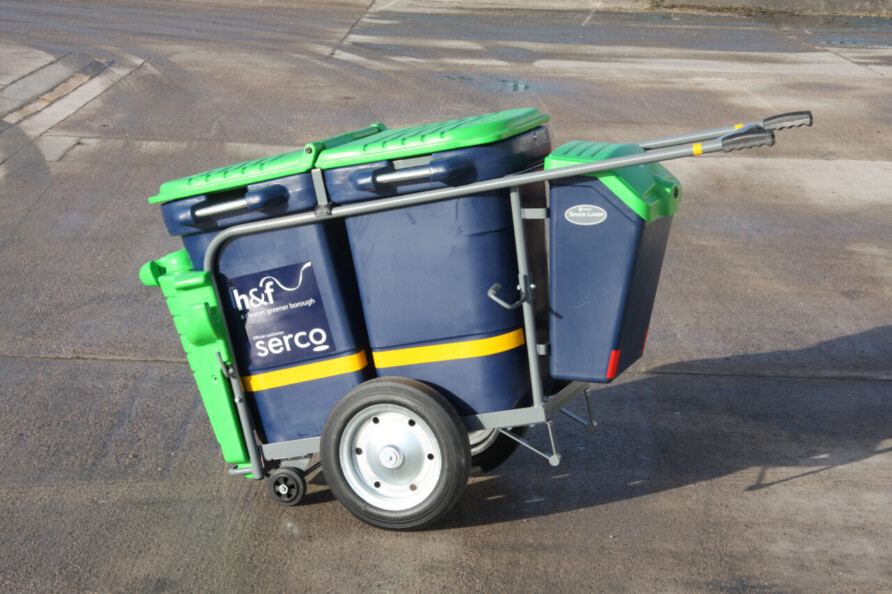
Now I will be the first to admit these are somewhat lacking in street cred, but they are tough.
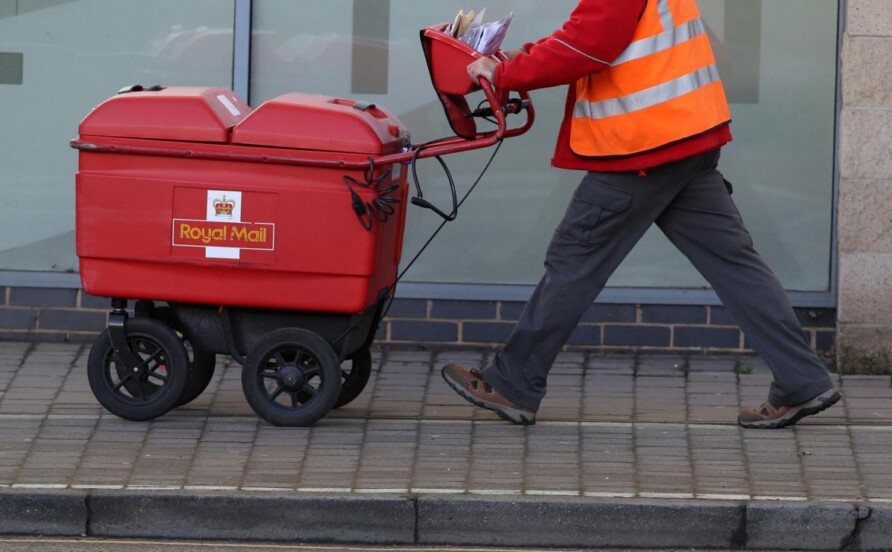
They are designed for high-duty cycles and fairly careless handling, in an urban environment
New Build
Have we improved on those WWII designs?
Maybe we could contract with any of the numerous small engineering companies in the UK to build one of those?
Utilise modern materials like honeycomb aluminium panels and ‘off the shelf’ run-flat bicycle tyres, but none of those older designs has all that much room for improvement.
Electric
Electric delivery trolleys are fishing barrows increasingly available.
Powered wheelbarrows would be useful, especially if they had a common battery with those power tools.
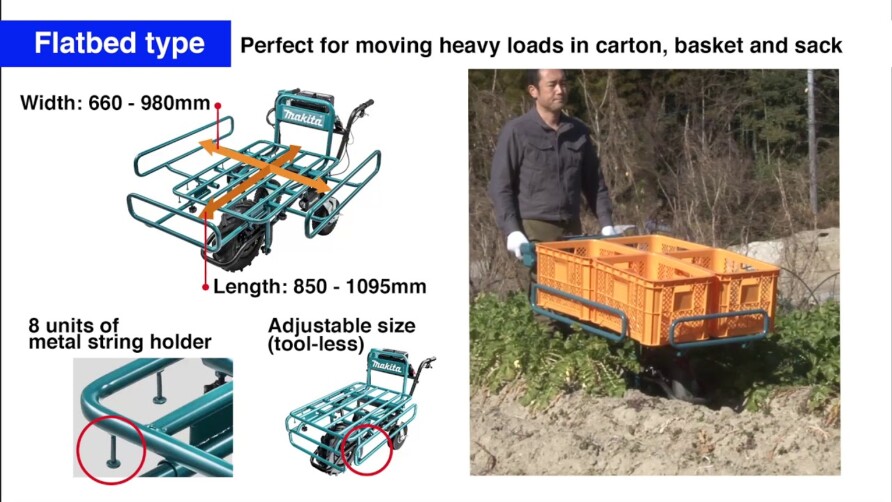
There are a couple of manufacturers of dedicated military equipment.
The first is Wild Goose from Marom Dolphin in Israel
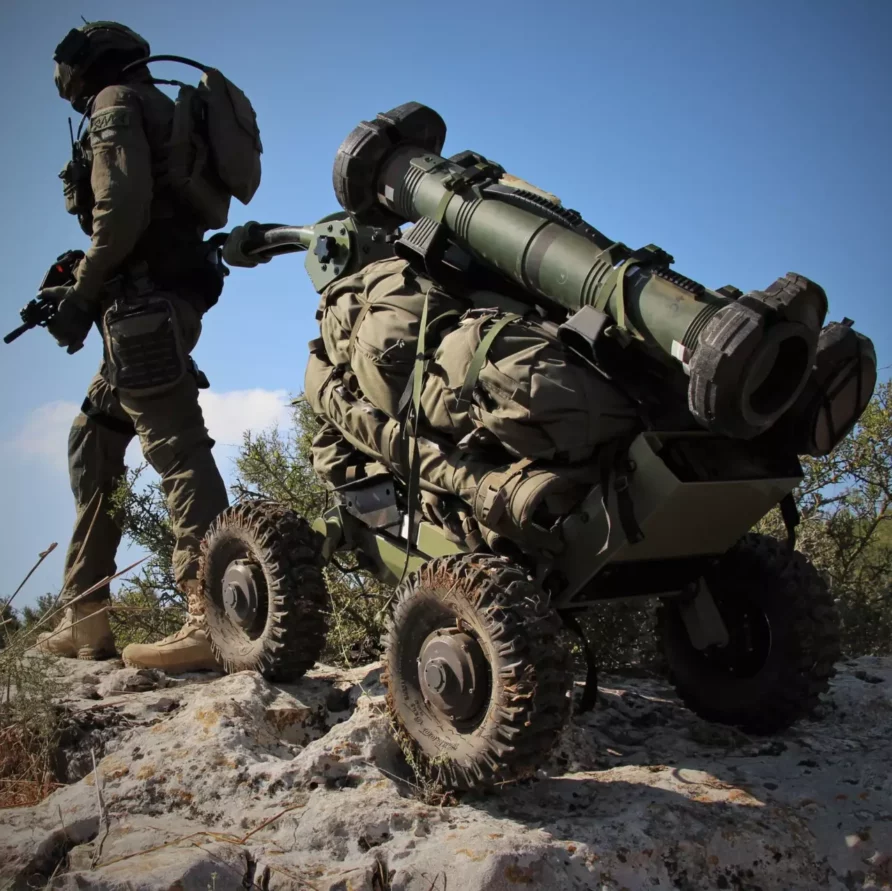
This device is available in two or four-wheel options with load capacities of up to 140 kg.
The device in the X post below looks similar to the that above.
From Hendrick Motorsports in the USA, the STEED (Silent Tactical Energy Enhanced Dismount)
It comes folded
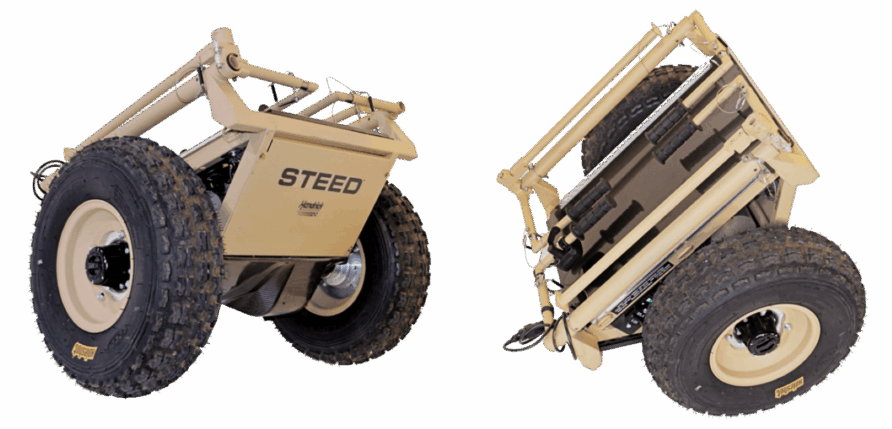
And can be used by one or two people
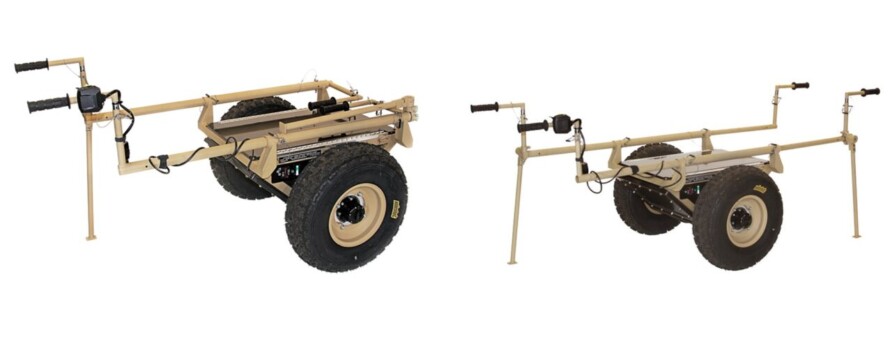
STEED has a payload of up to 227 kg and a range of 24 and 48 km on a single battery.
Another option, although not quite similar, is the MTT-154
I don’t expect any of these would be cheap.
DIY
This brings me to my final option, DIY.
We could experiment until a design has been proven, then allow local units to build from either kit of parts of basic materials like Unistrut, box section and bicycle or beach wheels.
I like this option, the design could be held on an electronic battle box, and constant iteration will keep things improving.
It keeps things cheap, disposable and doable without a massive project, units will tend to have attached handy folks from the REME or RE.
Unistrut, plastic tubs and similar materials will also have all sorts of benefits and uses, held in unit stores.
Take a 200-litre Hogbox like that below
These have all sorts of utility outside the handcart world, you can even secure them to standard pallets and move them as a unit load.
They cost about a hundred quid
Then build an Unistrut frame or, if you have some box section and a friendly welder, weld the frame and handle.
Attach the wheels, the job is done.
Probably no more than a couple of hundred pounds
Summary
I think there is a lot of benefit in these simple solutions to enduring problems, and unsurprisingly, many of them old fellas also faced the same problem.
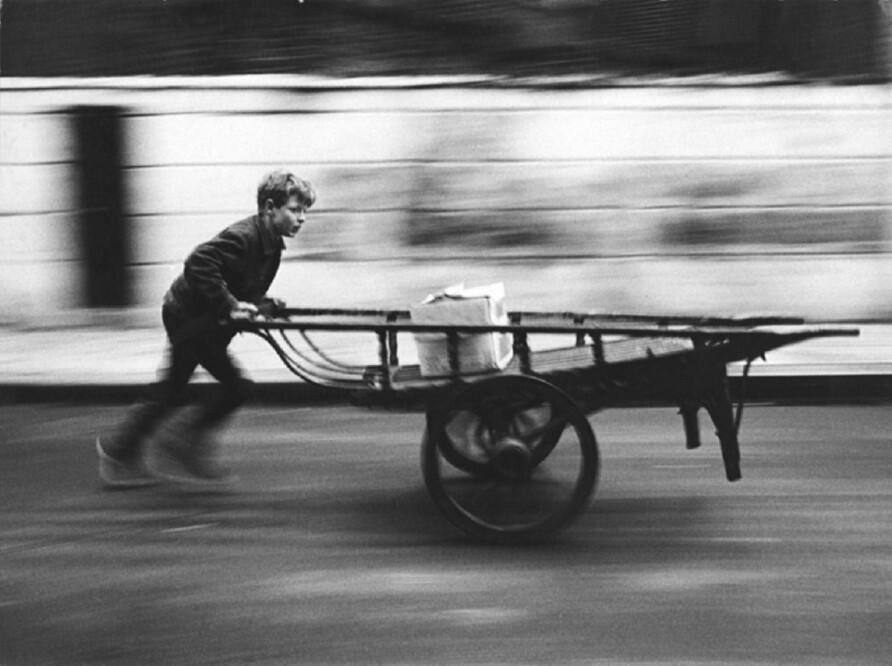
If I had to choose, it would be the DIY route.
Cheap, easy to create at the point of need, no expensive contracts or support arrangements, and not time-consuming procurement and specification activities, just local purchase and build.
Anyway, in the future, see you in the comments.
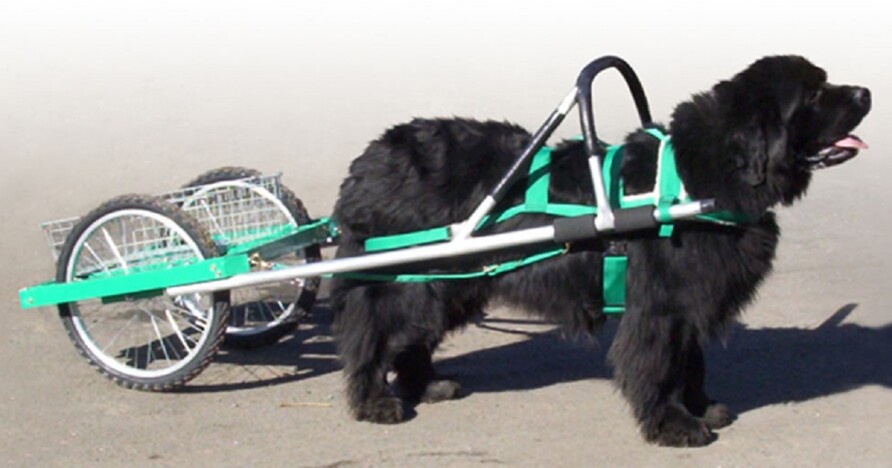
Further Reading
https://vickersmg.blog/2018/01/15/project-complete-irish-handcarts/amp/
http://www.theliberator.be/handcart.htm
http://www.handcartz.com/index.html
https://www.smallarmsreview.com/display.article.cfm?idarticles=2479
https://www.bergflak.com/pstransp.html

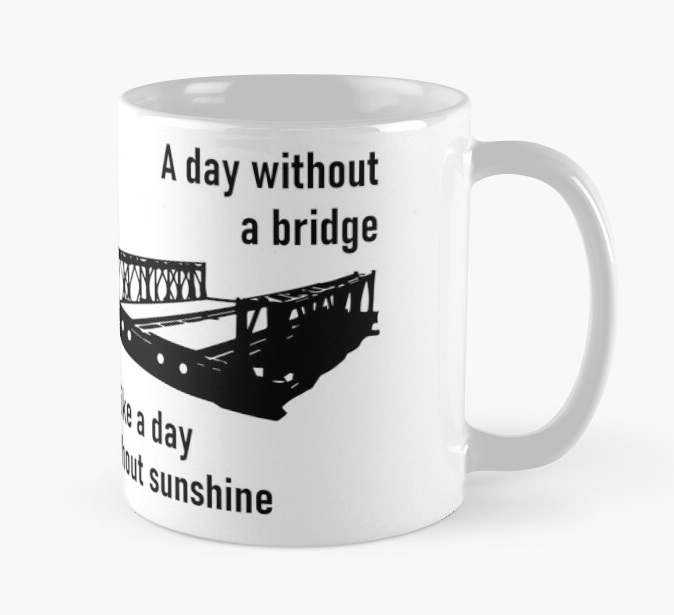
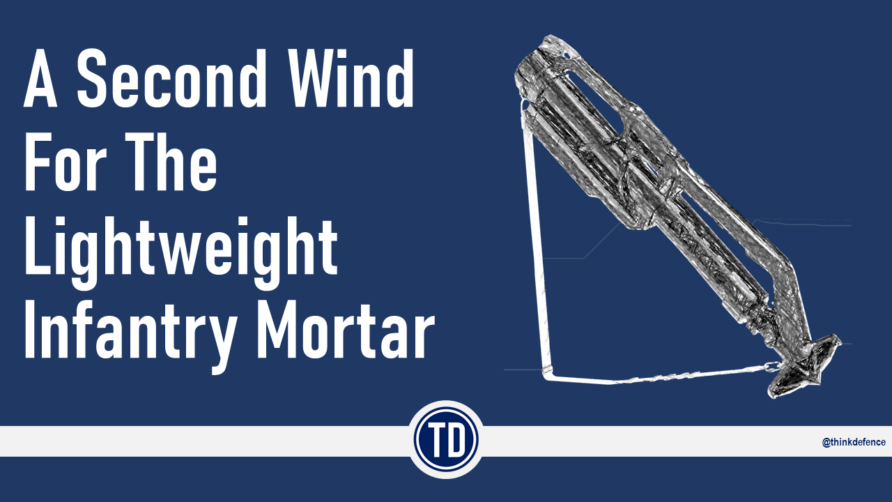
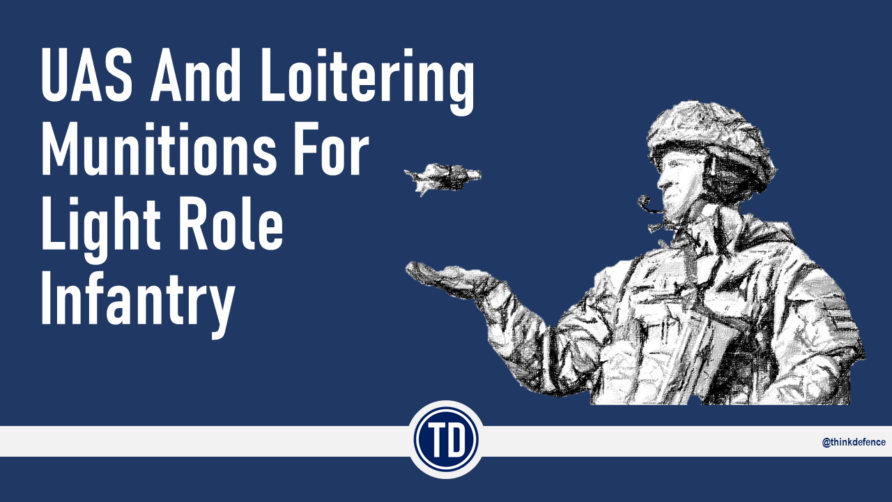

Once again a great article on important equipment (waiting on a FLO FLO update as I think they could resolve a lot of RFA/RN problems).
Slight aside but given the lack of people we now have in the army, should each section have a dog handler? It’s not as mad as it sounds and whilst dogs are expensive to train, I suspect they are value for money through their lifecycle.
One of the many tasks a dog could undertake is to pull a cart. I do think we are maybe missing a trick here.
There were a few variants for the Vickers MG as well but not in use with the British Army, despite them having one of the Lewis. The Irish Army developed one in the 1930s that stayed in service until the 1960s and they used variants for their mortars and anti-tank weapons as well. The concerns over the lack of off-road mobility have always seemed to outweigh the additional pace it can give the soldiers on-road.
You’ve already posted the link but here is it for the Irish handcarts. The Lewis one will have to wait for a while. https://vickersmg.blog/2018/01/15/project-complete-irish-handcarts/
Reading this article reminded me of the less than favourable experiences had by the 1st Bn London Rifle Brigade (LRB) in Sept 1916 with handcarts during a 14 mile march to ‘Happy Valley’ near Bray (as recorded in the ‘History of LRB 1859 – 1919’) Clearly a design not fit for the prevailing conditions on the Western Front at the time and proving to be more of a hindrance than a help:
“The Lewis gun teams in charge of 2nd Lieut. Poland had a particularly hard task in dragging some unserviceable two-wheeled carts, better suited for perambulators than their intended purpose, across country through soft and wet fields. A good many of the carts did not survive this and the remainder were then scrapped, to every one’s relief.”
I don’t know if anyone has mentioned Low Tech Magazine on here before, but here are some more possibilities:
https://www.lowtechmagazine.com/2011/12/the-chinese-wheelbarrow.html
https://www.lowtechmagazine.com/2012/09/jobs-of-the-future-cargo-cyclist.html
Last year I built an electric go cart for my son using leftover bicycle parts a wooden ISO pallet and a 500 watt electric motors bought off amazon for 50 quid.
Standard wooden pallets hold 160 kg and cost 10£. That’s 20kg off each man in an infantry section. Keep it cheap and disposable it only need to go at walking pace and if it breaks throw it away. The motor should be a detachable bolt on like the guidance kit on a LGB
Don’t forget nursery/landscape hand carts. Four-wheeled, 454kg load, extremely stable on rough ground.
The slighty alternate form was widely used in the vietnam war, a vast amount of supplys was moved by Bicycle.